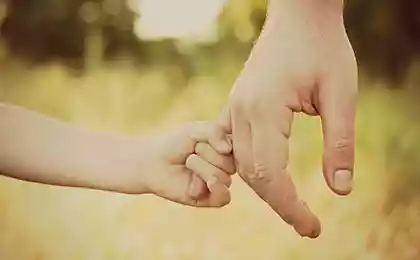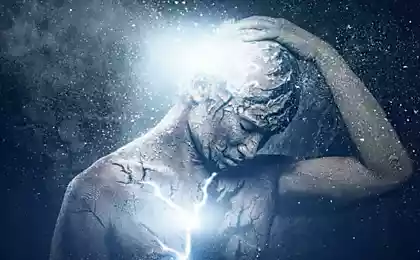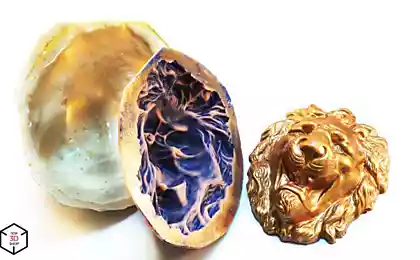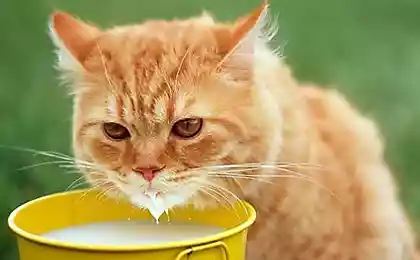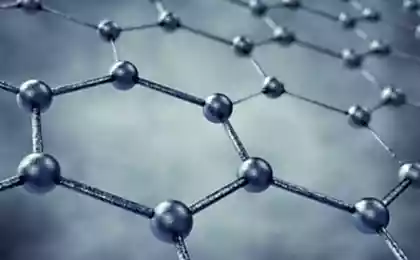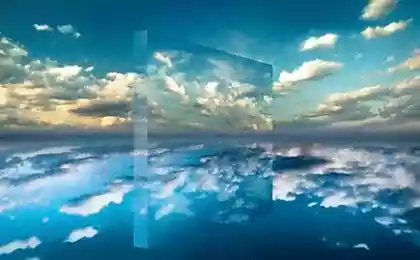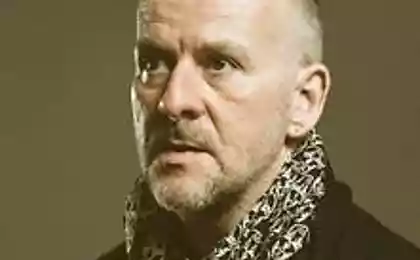685
10 possible forms of life
Thirteen million two hundred eighty eight thousand six hundred ninety three
In the search for extraterrestrial intelligence scientists often get accusations of "carbon chauvinism", because they see that other geneforge in the Universe are composed of the same biochemical building blocks, and we are accordingly building up their searches. But life could be different, and people think about it — so let's examine ten possible biological and non-biological systems that expand the definition of "life".
Метаногены
In 2005, Heather Smith of the International space University in Strasbourg and Chris McKay of the Ames Research center, NASA has prepared a document examining the possibility of life based on methane, so-called methanogens. Such forms of life could consume hydrogen, acetylene and ethane, and exhale methane instead of carbon dioxide.
This would make possible the habitable zone of life in the cold worlds like the moon of Saturn the Titan. Like Earth, the atmosphere of Titan are presented for the most part nitrogen, but mixed with methane. Titan is also the only place in our Solar system besides Earth where there are large liquid water bodies — lakes and rivers from ethano-methane mixture. (Underground water reservoirs are also present on Titan, its sister moon Enceladus and on Jupiter's moon Europe). The fluid is considered necessary for the molecular interactions of organic life and, of course, the focus will be on the water, but ethane and methane also allow such interactions to be carried out.
The mission of NASA and ESA, "Cassini-Huygens" in 2004, watched dirty world with a temperature of -179 degrees Celsius, where water was hard as a rock, and the methane floated along river valleys and basins in the Arctic lakes. In 2015, the team of chemical engineers and astronomers from Cornell University have developed a theoretical cell membrane of small organic nitrogen compounds that could operate in the liquid methane of Titan. They named their theoretical cell "asktosave", which literally means "nitrogen body", and it had the same stability and flexibility that the earth liposome. The most interesting molecular compound was akrilonitrila Isotoma. Acrylonitrile, a colorless and poisonous organic molecule is used for acrylic paints, rubber and thermoplastic on the Ground; this is also found in the atmosphere of Titan.
The implications of these experiments for the search for extraterrestrial life is difficult to overestimate. Life is not only potentially could evolve on Titan, but it is also possible to detect hydrogen, acetylene and etnovyr traces on the surface. Planets and moons, atmospheres dominated by methane, can be not only around Sun-like stars, but also around red dwarfs in the wider "Goldilocks zone". If NASA will launch Titan Mare Explorer in 2016, in 2023 we will receive detailed information about possible life on nitrogen.
Life based on кремния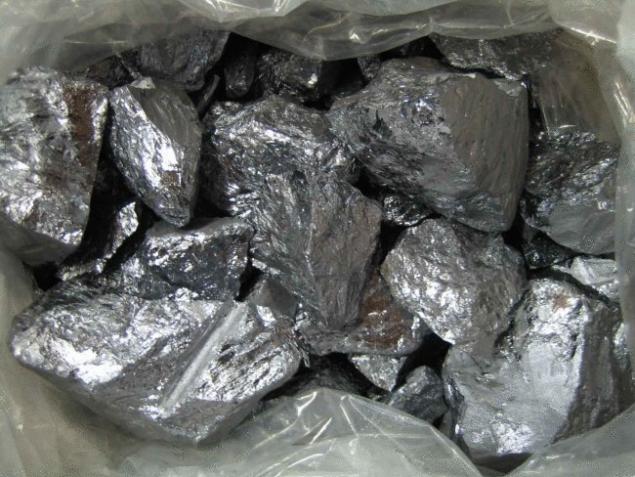
Life based on silicon is perhaps the most common form of alternative biochemistry, a favorite of popular science and science fiction — remember the Horta from Star trek. This idea is not new, its roots in the reflections of H. G. wells in 1894: "What a fantastic imagination could have drawn from this assumption: imagine a silicon-aluminium organisms — or, why not silicon-aluminium men? — travelling through the atmosphere from gaseous sulphur, put like that, the seas of liquid iron with a temperature of several thousand degrees or something, just above the temperature of the blast furnace".
Silicon remains popular because it's very similar to carbon and can form four bonds like carbon, which opens the possibility of creating biochemical systems are completely dependent on silicon. It is the most abundant element in the earth's crust, except for oxygen. On Earth eat seaweed, which include silicon in your growth process. Silicon plays second after carbon the role, because he can form a more stable complex and diverse structures necessary for life. Carbon molecules include oxygen and nitrogen, which form an incredibly strong bond. Complex molecules based on silicon, unfortunately, have a tendency to disintegrate. In addition, carbon is extremely common in the Universe and there are billions of years old.
Hardly life based on silicon will appear in the environment, like the earth, since most of the free silicon to be trapped in volcanic and igneous rocks of silicate materials. Assume that in the high temperature environment, everything can be different, but no evidence is not found. Extreme world like Titan could support life based on silicon possible, coupled with methanogens, since molecules like silanes and silicon polysilanes can mimic the organic chemistry of the Earth. However, on the surface of Titan is dominated by carbon, while most of the silicon is deep below the surface.
Astronomic NASA Max Bernstein suggested that life based on silicon could exist on a very hot planet with an atmosphere rich in hydrogen and poor in oxygen, allowing you to happen the comprehensive silonovoy chemistry with silicon back bonds with selenium or tellurium, but is, according to Bernstein, is unlikely. On Earth, these organisms would breed very slowly, and our biochemistry does not interfere with each other. They, however, could slowly eat our cities, but "to them it would be possible to use a jackhammer".
Other biochemical варианты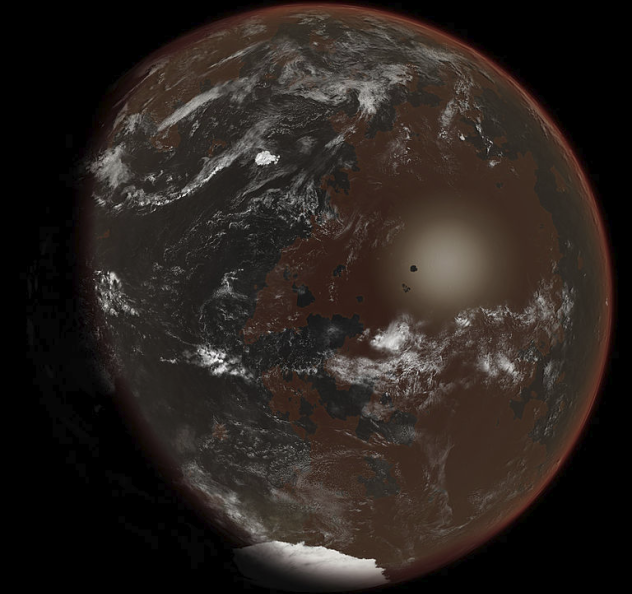
In principle, it was quite a lot of suggestions about life systems based on something else, in addition to carbon. Like carbon and silicon, boron also tends to form strong covalent molecular compounds, forming different structural versions of the hydride in which boron atoms are connected by hydrogen bridges. Like carbon, boron can bind with nitrogen, forming compounds, in the chemical and physical properties similar to alkanes, the simplest organic compounds. The main problem with life on the basis of boron stems from the fact that it's a pretty rare item. Life based on boron would be most useful in an environment whose temperature is low enough for liquid ammonia, then the chemical reaction will proceed more controlled.
Another possible form of life that has attracted some attention, it's life based on arsenic. All life on Earth consists of carbon, hydrogen, oxygen, phosphorus and sulfur, but in 2010 NASA announced it had found the bacterium GFAJ-1 that could incorporate arsenic instead of phosphorus in cellular structure without any consequences for themselves. GFAJ-1 lives in Mishakov rich waters of Mono lake in California. Arsenic is poisonous to any living creature on the planet except a few microorganisms that normally carry it or breathe it. GFAJ-1 was the first time the inclusion body of this element as a biological building block. Independent experts are a bit diluted this statement when they found no evidence of the inclusion of arsenic in the DNA or at least some arsenate. Nonetheless sparked interest in the possibility of biochemistry-based arsenic.
As a possible alternative to water for the construction of the forms of life were put forward and ammonia. Scientists have suggested the existence of biochemistry on the basis of nitrogen-hydrogen compounds, which use ammonia as a solvent; it could be used to create proteins, nucleic acids and polypeptides. Any form of life based on ammonia should exist at low temperatures at which ammonia takes the liquid form. Solid ammonia is denser than liquid ammonia, so there is no way to stop it from freezing in the cold. For unicellular organisms this would not be the problem, but would cause chaos for multicellular. However, there is a possibility of the existence of unicellular organisms ammonia on the cold planets of the Solar system and the gas giants like Jupiter.
Sulfur, believed to have served as the basis for the beginning of the metabolism on Earth, and known organisms in the metabolism which included sulfur instead of oxygen, exist in extreme conditions on Earth. Perhaps in another world life-forms based on sulfur could gain an evolutionary advantage. Some believe that nitrogen and phosphorus could also take the place of carbon under rather specific conditions.
Memetic жизнь
Richard Dawkins believes that the basic principle of life is: "All life evolves, by mechanisms of survival of replicating entities." Life should be able to reproduce (with some assumptions) and be in an environment where it will be possible natural selection and evolution. In his book "the Selfish gene" Dawkins noted that the concepts and ideas produced in the brain and distributed among the people in the communication process. In many ways, this resembles the behavior and adaptation of genes, so he calls them "memes". Some compare songs, jokes and rituals of human society with the first stages of organic life — free radicals, floating in the ancient seas of the Earth. Creations of the mind are reproduced, evolyutsioniruet and struggling for survival in the realm of ideas.
Such memes existed before mankind, in social calls of the birds and learned the behaviour of the primates. When humanity became able to think abstractly, memes have been further developed, managing the tribal relations and forming the basis for the first tradition, culture and religion. The invention of writing triggered the development of memes, since they were able to spread in space and time, passing memetichnaya information just as genes transmit biological. For some it is pure analogy, but others think that memes are unique, although a bit rudimentary and limited form of life.
Some went even further. George van Drim developed the theory of "symbiosis", which implies that languages are in themselves forms of life. Old linguistic theory thought language is something of a parasite, but van Drim believes that we live in cooperation with memetic entities that inhabit our brains. We live in a symbiotic relationship with language: without us they cannot exist, and without them we are no different from monkeys. He believes that the illusion of consciousness and free will resulted from the interaction of animal instincts, hunger and lust of a human host and linguistic patterns, playing with ideas and meanings.
Synthetic life based on XNA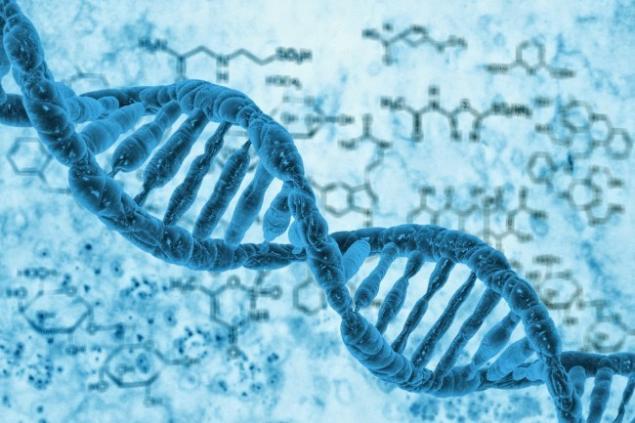
Life on Earth is based on two information-carrying molecules DNA and RNA, and for a long time, scientists wondered whether it is possible to create other similar molecules. Although any polymer can store information, RNA and DNA display heredity, encoding and transmission of genetic information and is able to adapt over time in the process of evolution. DNA and RNA is a chain of molecules, called nucleotides, consisting of three chemical components — phosphate, five-carbon sugar group (deoxyribose in DNA or ribose in RNA) and one of five standard bases (adenine, guanine, cytosine, thymine or uracil).
In 2012 a group of scientists from England, Belgium and Denmark first in the world to develop ksenodoxeiou acid (KNK, XNA), synthetic nucleotides, functionally and structurally similar to DNA and RNA. They were developed by replacing the sugar groups of the ribose deoxyribose and various substitutes. These molecules were doing before, but for the first time in history they were able to reproduce and evolve. In DNA and RNA replication occurs via molecules of polymerase that can read, transneuronal and back to normal transcribed nucleic acid sequences. The group has developed a synthetic polymerase, which created six new genetic systems: HNA, CeNA, LNA, ANA, FANA and TNA.
One of the new genetic systems, HNA, or hexacorallia acid, was reliable enough to store the necessary amount of genetic information that can serve as the basis for biological systems. Another reasononline acid, or TNA, was a potential candidate for the mysterious primary biochemistry that prevailed at the dawn of life.
There are lots of potential applications of these advances. Further research can help develop better models of the emergence of life on Earth and will have implications for biological fabrications. XNA can obtain a therapeutic application, it is possible to create nucleic acids for the treatment and specific molecular targets that will not deteriorate as fast as DNA or RNA. They can even form the basis for molecular machines or even artificial life forms.
But before this becomes possible, needs to be developed for other enzymes that are compatible with one of the XNA. Some of them have already developed in the UK in late 2014. There is also the possibility that XNA may cause damage to RNA/DNA organisms, so safety must be first.
Chromodynamics, the weak nuclear force and gravitational жизнь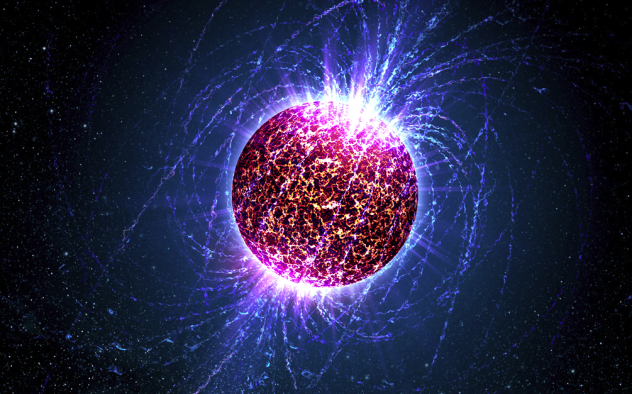
In 1979, a scientist and nanotechnologist Robert Freitas Jr. suggested a possible non-biological life. He said that the possible metabolism of living systems is based on four fundamental forces — electromagnetism, the strong nuclear interaction (or quantum chromodynamics), weak nuclear interaction and gravity. Solenoid life is the standard of biological life we have on Earth.
The chromodynamic life could be based on the strong nuclear interaction, which is considered the strongest of the fundamental forces, but only at extremely short distances. Freitas suggested that this environment may be possible for a neutron star, heavy rotating object 10 to 20 kilometers in diameter with a mass of stars. With incredible density, a powerful magnetic field and gravity 100 billion times stronger than on Earth, such a star would be a nucleus with 3-km crust of crystalline iron. It would have been under the sea with incredibly hot neutrons, different nuclear particles, protons and nuclei of atoms and the possible neutron-rich "MacReady". These MacReady in theory could create large zveryata similar organic molecules, neutrons would be equivalent to the water in fancy pseudobiological system.
Freitas saw the forms of life on the basis of the weak nuclear interaction as unlikely as the weak forces act only in the subnuclear range and not particularly strong. How often shows beta-radioactive decay and free decay of neutrons, the life-forms of the weak interaction could exist with careful control of weak interactions in their environment. Freitas presented the creatures, consisting of atoms with excess neutrons, which become radioactive when they die. He also suggested that there are regions of the Universe where the weak nuclear force is stronger and, therefore, the chances of the emergence of such a life above.
Gravitational entities can exist because gravity is the most common and effective fundamental force in the Universe. Such beings could get power from gravity, getting unlimited food from the collisions of black holes, galaxies and other celestial objects; the smaller creatures — from the rotation of planets; the smallest — from the energy of waterfalls, wind, tides and ocean currents, possibly, earthquakes.
Life forms from dust and плазмы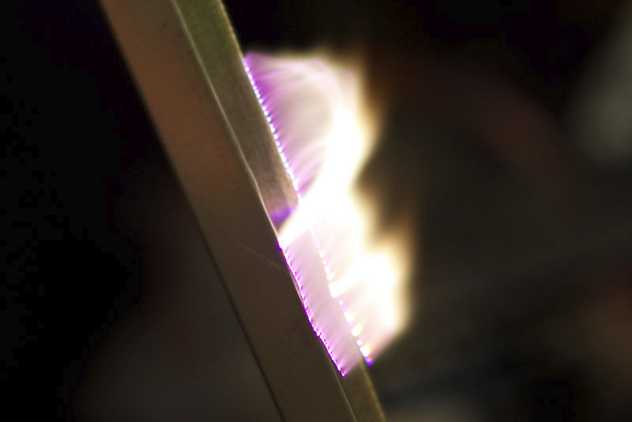
Organic life on Earth is based on molecules of carbon compounds, and we have found a possible connection for the alternate forms. But in 2007, an international group of scientists headed by V. N. By Tsytovich of the General physics Institute of the Russian Academy of Sciences documented that under the right conditions, particles of inorganic dust can gather in a helical structure, which then will interact with each other in a manner characteristic for organic chemistry. This behavior is also born in the state of plasma, the fourth state of matter after solid, liquid and gaseous, when electrons detach from the atoms, leaving the mass of charged particles.
A group of Tsytovich found that when electronic charges are separated and plasma is polarized, the particles in the plasma self-assemble to form helical structures like a corkscrew, electrically charged, and are attracted to each other. They can also divide, forming copies of the original structures, like DNA, and to induce charges in their neighbors. According to Tsytovich, "these complex, self-organizing plasma structures meet all the necessary requirements to consider them as candidates for inorganic living matter. They are Autonomous, they are reproduced and they evolyutsioniruet".
Some skeptics believe that such statements are more an attempt to draw attention rather than a serious scientific statements. Although helical structures in the plasma can remind the DNA, the similarity in form does not necessarily imply similarity in function. Moreover, the fact that spirals are reproduced, does not mean the potential of life; clouds do that too. What is even more depressing, most of the studies were conducted on computer models.
One of the participants of the experiment were also informed that although the results actually looked like in life, in the end, they were "just a special form of plasma crystal." And yet, if the inorganic particles in the plasma can become self-replicating, evolving forms of life, they can be the most common form of life in the Universe, thanks to the ubiquitous plasma and interstellar dust clouds across the cosmos.
Inorganic chemical клетки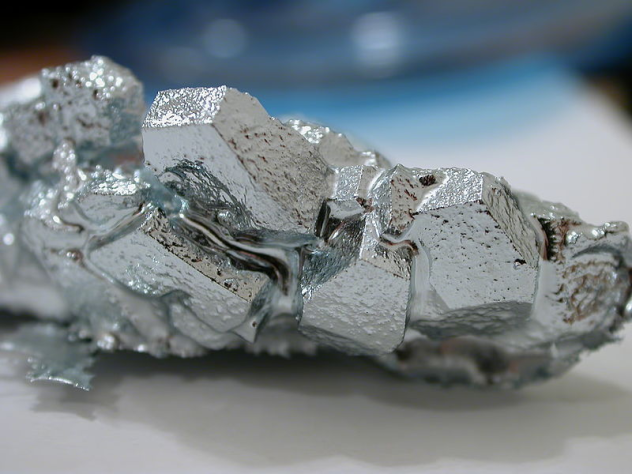
Professor Lee Cronin, a chemist at the College of science and engineering at the University of Glasgow, wants to create living cells out of metal. It uses polyoxometallate, the number of metal atoms associated with oxygen and phosphorus to create cells similar to bubbles, which he calls "inorganic chemical cells," or iCHELLs (this acronym can be translated as "pogledi").
The Cronin group began with the creation of salts from negatively charged ions of the large metal oxides that are associated with a small positively charged ion like sodium or hydrogen. The solution of these salts then injected into another salt solution, full of large positively charged organic ions associated with negatively charged small. Two salts meet up and exchange pieces so that the major oxides of the metal are becoming partners with large organic ions, forming something like a bubble that is impervious to water. Changing the backbone of the metal oxide, it is possible to ensure that bubbles will acquire the properties of biological cell membranes that selectively pass and release chemicals from the cell that could potentially allow leakage of the same type of controlled chemical reactions that occurs in living cells.
A group of scientists also made bubbles within bubbles, simulating the internal structure of biological cells, have made progress in creating artificial forms of photosynthesis that can potentially be used to create artificial plant cells. Other synthetic biologists have noted that these cells can never become alive until you get a system of replication and evolution, like DNA. Cronin does not lose hope that further development will bear fruit. Among the possible applications of this technology are also developing materials for solar fuel devices and, of course, medicine.
According to Cronin, "the main goal is to create complex chemical cells with human properties that can help us understand the development of life and to go the same way to bring new technology-based evolution in the material world — a kind of inorganic living technology."
Probes background Неймана
Artificial life is based on machines — this is a fairly common idea, almost banal, so let's just consider probes of von Neumann, not to circumvent it. They were first invented in the mid 20th century Hungarian mathematician and futurist John von Neumann, who believed that in order to reproduce functions of the human brain, the machine must have mechanisms of self-healing. So he came to the idea of creating self-replicating machines, which are observations of the increasing complexity of life in the process of reproduction. He believed that such machines can become a sort of universal constructor, which could allow not only to create a complete replica of himself, but also to improve or change version, thereby making the evolution and increasing complexity over time.
Other futurists like Freeman Dyson, Eric Drexler, and quickly applied these ideas to the field of space research and has created a probe of von Neumann. Send self-replicating robot into space can be the most efficient way of colonizing the galaxy, so you can capture the entire milky Way in less than one million years, even being restricted by the speed of light.
As explained by Michio Kaku:
"Probe von Neumann is a robot designed to reach distant star systems and create factories which will build copies of themselves by the thousands. Dead moon, even the planet, can be the perfect destination for probes von Neumann, because it will be easier to land and take off from these moons, and also because the moons no erosion. The probes could live off the land, extracting iron, Nickel and other raw materials for the construction of robot factories. They would have created thousands of copies of themselves that are then dispersed in search of other star systems."Over the years, have been invented different versions of the basic idea of the probe of von Neumann, including the probe development and exploration for quiet study and observation of extraterrestrial civilizations; probes connection, scattered throughout the cosmos in order to better capture the radio signals of the aliens; working probes for the construction of a supermassive cosmic structures; probes colonizers that will conquer other worlds. May even be guiding the probes that will bring young civilization into space. Alas, there may be probes Berserkers, whose task will be the destruction of traces of any organic matter in space, followed by the construction of police probes to be to repel the attacks. Given the fact that the probes von Neumann can become a kind of space virus, we should take a cautious approach to their development.
Hypothesis Геи
In 1975, James Lovelock and Sidney Epton, jointly wrote an article for New Scientist entitled "looking Gay". Adhering to the traditional view that life originated on Earth, and flourished thanks to the right material conditions, Lovelock and Epton suggested that the life thus took an active role in maintaining and determining conditions for their survival. They suggested that all living matter on Earth, in the air, the oceans and on the surface is part of a single system, behaving like a to be superior so as which is able to adjust the temperature on the surface and atmospheric composition needed for survival. They named this system Gaia, after the Greek goddess of the earth. It exists to maintain homeostasis, whereby on earth can exist in the biosphere.
Lovelock worked on the Gaia theory since the mid 60-ies. The basic idea is that the biosphere of the Earth has several natural cycles, and when one goes awry, the others compensate for it in order to support vital ability. This could explain why the atmosphere is not composed entirely of carbon dioxide, or why the sea is not too salty. Although the volcanic eruption has made an early atmosphere consisting mainly of carbon dioxide, appeared to produce nitrogen bacteria and plants producing oxygen during photosynthesis. After millions of years the atmosphere has changed in our favor. While rivers carry salt to the oceans from the rocks, the salinity of the oceans has remained stable at 3.4%, as the salt seeps through cracks in the seafloor. It's not a conscious process but the result of feedback that keeps planets in habitable equilibrium.
Other evidence includes the fact that if no biotic activity, methane and hydrogen would disappear from the atmosphere in just a few decades. In addition, despite the increase in the temperature of the Sun by 30% over the past 3.5 billion years, global mean temperature staggered to just 5 degrees Celsius, thanks to a regulatory mechanism that removes carbon dioxide from the atmosphere and locks it in fossilized organic matter.
Lovelock initially, the idea was met with ridicule and accusations. Over time, however, the Gaia theory has influenced the ideas of the biosphere of the Earth, helped shape their whole perception in the scientific world. Today the Gaia theory rather respected than accepted by scientists. It is rather positive cultural frame in which to carry out research on the theme of the Earth as a global ecosystem.
Paleontologist Peter ward has developed a competitive Medea hypothesis, named after the mother who killed her children in Greek mythology, whose main idea is that life inherently tends to self-destruction and suicide. He points to the fact that historically most mass extinctions were caused by life forms, for example, microorganisms or hominids in the pants that cause serious injury to the Earth's atmosphere.
P. S. And remember, just changing your mind — together we change the world! ©
Source: hi-news.ru
In the search for extraterrestrial intelligence scientists often get accusations of "carbon chauvinism", because they see that other geneforge in the Universe are composed of the same biochemical building blocks, and we are accordingly building up their searches. But life could be different, and people think about it — so let's examine ten possible biological and non-biological systems that expand the definition of "life".
Метаногены

In 2005, Heather Smith of the International space University in Strasbourg and Chris McKay of the Ames Research center, NASA has prepared a document examining the possibility of life based on methane, so-called methanogens. Such forms of life could consume hydrogen, acetylene and ethane, and exhale methane instead of carbon dioxide.
This would make possible the habitable zone of life in the cold worlds like the moon of Saturn the Titan. Like Earth, the atmosphere of Titan are presented for the most part nitrogen, but mixed with methane. Titan is also the only place in our Solar system besides Earth where there are large liquid water bodies — lakes and rivers from ethano-methane mixture. (Underground water reservoirs are also present on Titan, its sister moon Enceladus and on Jupiter's moon Europe). The fluid is considered necessary for the molecular interactions of organic life and, of course, the focus will be on the water, but ethane and methane also allow such interactions to be carried out.
The mission of NASA and ESA, "Cassini-Huygens" in 2004, watched dirty world with a temperature of -179 degrees Celsius, where water was hard as a rock, and the methane floated along river valleys and basins in the Arctic lakes. In 2015, the team of chemical engineers and astronomers from Cornell University have developed a theoretical cell membrane of small organic nitrogen compounds that could operate in the liquid methane of Titan. They named their theoretical cell "asktosave", which literally means "nitrogen body", and it had the same stability and flexibility that the earth liposome. The most interesting molecular compound was akrilonitrila Isotoma. Acrylonitrile, a colorless and poisonous organic molecule is used for acrylic paints, rubber and thermoplastic on the Ground; this is also found in the atmosphere of Titan.
The implications of these experiments for the search for extraterrestrial life is difficult to overestimate. Life is not only potentially could evolve on Titan, but it is also possible to detect hydrogen, acetylene and etnovyr traces on the surface. Planets and moons, atmospheres dominated by methane, can be not only around Sun-like stars, but also around red dwarfs in the wider "Goldilocks zone". If NASA will launch Titan Mare Explorer in 2016, in 2023 we will receive detailed information about possible life on nitrogen.
Life based on кремния

Life based on silicon is perhaps the most common form of alternative biochemistry, a favorite of popular science and science fiction — remember the Horta from Star trek. This idea is not new, its roots in the reflections of H. G. wells in 1894: "What a fantastic imagination could have drawn from this assumption: imagine a silicon-aluminium organisms — or, why not silicon-aluminium men? — travelling through the atmosphere from gaseous sulphur, put like that, the seas of liquid iron with a temperature of several thousand degrees or something, just above the temperature of the blast furnace".
Silicon remains popular because it's very similar to carbon and can form four bonds like carbon, which opens the possibility of creating biochemical systems are completely dependent on silicon. It is the most abundant element in the earth's crust, except for oxygen. On Earth eat seaweed, which include silicon in your growth process. Silicon plays second after carbon the role, because he can form a more stable complex and diverse structures necessary for life. Carbon molecules include oxygen and nitrogen, which form an incredibly strong bond. Complex molecules based on silicon, unfortunately, have a tendency to disintegrate. In addition, carbon is extremely common in the Universe and there are billions of years old.
Hardly life based on silicon will appear in the environment, like the earth, since most of the free silicon to be trapped in volcanic and igneous rocks of silicate materials. Assume that in the high temperature environment, everything can be different, but no evidence is not found. Extreme world like Titan could support life based on silicon possible, coupled with methanogens, since molecules like silanes and silicon polysilanes can mimic the organic chemistry of the Earth. However, on the surface of Titan is dominated by carbon, while most of the silicon is deep below the surface.
Astronomic NASA Max Bernstein suggested that life based on silicon could exist on a very hot planet with an atmosphere rich in hydrogen and poor in oxygen, allowing you to happen the comprehensive silonovoy chemistry with silicon back bonds with selenium or tellurium, but is, according to Bernstein, is unlikely. On Earth, these organisms would breed very slowly, and our biochemistry does not interfere with each other. They, however, could slowly eat our cities, but "to them it would be possible to use a jackhammer".
Other biochemical варианты

In principle, it was quite a lot of suggestions about life systems based on something else, in addition to carbon. Like carbon and silicon, boron also tends to form strong covalent molecular compounds, forming different structural versions of the hydride in which boron atoms are connected by hydrogen bridges. Like carbon, boron can bind with nitrogen, forming compounds, in the chemical and physical properties similar to alkanes, the simplest organic compounds. The main problem with life on the basis of boron stems from the fact that it's a pretty rare item. Life based on boron would be most useful in an environment whose temperature is low enough for liquid ammonia, then the chemical reaction will proceed more controlled.
Another possible form of life that has attracted some attention, it's life based on arsenic. All life on Earth consists of carbon, hydrogen, oxygen, phosphorus and sulfur, but in 2010 NASA announced it had found the bacterium GFAJ-1 that could incorporate arsenic instead of phosphorus in cellular structure without any consequences for themselves. GFAJ-1 lives in Mishakov rich waters of Mono lake in California. Arsenic is poisonous to any living creature on the planet except a few microorganisms that normally carry it or breathe it. GFAJ-1 was the first time the inclusion body of this element as a biological building block. Independent experts are a bit diluted this statement when they found no evidence of the inclusion of arsenic in the DNA or at least some arsenate. Nonetheless sparked interest in the possibility of biochemistry-based arsenic.
As a possible alternative to water for the construction of the forms of life were put forward and ammonia. Scientists have suggested the existence of biochemistry on the basis of nitrogen-hydrogen compounds, which use ammonia as a solvent; it could be used to create proteins, nucleic acids and polypeptides. Any form of life based on ammonia should exist at low temperatures at which ammonia takes the liquid form. Solid ammonia is denser than liquid ammonia, so there is no way to stop it from freezing in the cold. For unicellular organisms this would not be the problem, but would cause chaos for multicellular. However, there is a possibility of the existence of unicellular organisms ammonia on the cold planets of the Solar system and the gas giants like Jupiter.
Sulfur, believed to have served as the basis for the beginning of the metabolism on Earth, and known organisms in the metabolism which included sulfur instead of oxygen, exist in extreme conditions on Earth. Perhaps in another world life-forms based on sulfur could gain an evolutionary advantage. Some believe that nitrogen and phosphorus could also take the place of carbon under rather specific conditions.
Memetic жизнь

Richard Dawkins believes that the basic principle of life is: "All life evolves, by mechanisms of survival of replicating entities." Life should be able to reproduce (with some assumptions) and be in an environment where it will be possible natural selection and evolution. In his book "the Selfish gene" Dawkins noted that the concepts and ideas produced in the brain and distributed among the people in the communication process. In many ways, this resembles the behavior and adaptation of genes, so he calls them "memes". Some compare songs, jokes and rituals of human society with the first stages of organic life — free radicals, floating in the ancient seas of the Earth. Creations of the mind are reproduced, evolyutsioniruet and struggling for survival in the realm of ideas.
Such memes existed before mankind, in social calls of the birds and learned the behaviour of the primates. When humanity became able to think abstractly, memes have been further developed, managing the tribal relations and forming the basis for the first tradition, culture and religion. The invention of writing triggered the development of memes, since they were able to spread in space and time, passing memetichnaya information just as genes transmit biological. For some it is pure analogy, but others think that memes are unique, although a bit rudimentary and limited form of life.
Some went even further. George van Drim developed the theory of "symbiosis", which implies that languages are in themselves forms of life. Old linguistic theory thought language is something of a parasite, but van Drim believes that we live in cooperation with memetic entities that inhabit our brains. We live in a symbiotic relationship with language: without us they cannot exist, and without them we are no different from monkeys. He believes that the illusion of consciousness and free will resulted from the interaction of animal instincts, hunger and lust of a human host and linguistic patterns, playing with ideas and meanings.
Synthetic life based on XNA

Life on Earth is based on two information-carrying molecules DNA and RNA, and for a long time, scientists wondered whether it is possible to create other similar molecules. Although any polymer can store information, RNA and DNA display heredity, encoding and transmission of genetic information and is able to adapt over time in the process of evolution. DNA and RNA is a chain of molecules, called nucleotides, consisting of three chemical components — phosphate, five-carbon sugar group (deoxyribose in DNA or ribose in RNA) and one of five standard bases (adenine, guanine, cytosine, thymine or uracil).
In 2012 a group of scientists from England, Belgium and Denmark first in the world to develop ksenodoxeiou acid (KNK, XNA), synthetic nucleotides, functionally and structurally similar to DNA and RNA. They were developed by replacing the sugar groups of the ribose deoxyribose and various substitutes. These molecules were doing before, but for the first time in history they were able to reproduce and evolve. In DNA and RNA replication occurs via molecules of polymerase that can read, transneuronal and back to normal transcribed nucleic acid sequences. The group has developed a synthetic polymerase, which created six new genetic systems: HNA, CeNA, LNA, ANA, FANA and TNA.
One of the new genetic systems, HNA, or hexacorallia acid, was reliable enough to store the necessary amount of genetic information that can serve as the basis for biological systems. Another reasononline acid, or TNA, was a potential candidate for the mysterious primary biochemistry that prevailed at the dawn of life.
There are lots of potential applications of these advances. Further research can help develop better models of the emergence of life on Earth and will have implications for biological fabrications. XNA can obtain a therapeutic application, it is possible to create nucleic acids for the treatment and specific molecular targets that will not deteriorate as fast as DNA or RNA. They can even form the basis for molecular machines or even artificial life forms.
But before this becomes possible, needs to be developed for other enzymes that are compatible with one of the XNA. Some of them have already developed in the UK in late 2014. There is also the possibility that XNA may cause damage to RNA/DNA organisms, so safety must be first.
Chromodynamics, the weak nuclear force and gravitational жизнь

In 1979, a scientist and nanotechnologist Robert Freitas Jr. suggested a possible non-biological life. He said that the possible metabolism of living systems is based on four fundamental forces — electromagnetism, the strong nuclear interaction (or quantum chromodynamics), weak nuclear interaction and gravity. Solenoid life is the standard of biological life we have on Earth.
The chromodynamic life could be based on the strong nuclear interaction, which is considered the strongest of the fundamental forces, but only at extremely short distances. Freitas suggested that this environment may be possible for a neutron star, heavy rotating object 10 to 20 kilometers in diameter with a mass of stars. With incredible density, a powerful magnetic field and gravity 100 billion times stronger than on Earth, such a star would be a nucleus with 3-km crust of crystalline iron. It would have been under the sea with incredibly hot neutrons, different nuclear particles, protons and nuclei of atoms and the possible neutron-rich "MacReady". These MacReady in theory could create large zveryata similar organic molecules, neutrons would be equivalent to the water in fancy pseudobiological system.
Freitas saw the forms of life on the basis of the weak nuclear interaction as unlikely as the weak forces act only in the subnuclear range and not particularly strong. How often shows beta-radioactive decay and free decay of neutrons, the life-forms of the weak interaction could exist with careful control of weak interactions in their environment. Freitas presented the creatures, consisting of atoms with excess neutrons, which become radioactive when they die. He also suggested that there are regions of the Universe where the weak nuclear force is stronger and, therefore, the chances of the emergence of such a life above.
Gravitational entities can exist because gravity is the most common and effective fundamental force in the Universe. Such beings could get power from gravity, getting unlimited food from the collisions of black holes, galaxies and other celestial objects; the smaller creatures — from the rotation of planets; the smallest — from the energy of waterfalls, wind, tides and ocean currents, possibly, earthquakes.
Life forms from dust and плазмы

Organic life on Earth is based on molecules of carbon compounds, and we have found a possible connection for the alternate forms. But in 2007, an international group of scientists headed by V. N. By Tsytovich of the General physics Institute of the Russian Academy of Sciences documented that under the right conditions, particles of inorganic dust can gather in a helical structure, which then will interact with each other in a manner characteristic for organic chemistry. This behavior is also born in the state of plasma, the fourth state of matter after solid, liquid and gaseous, when electrons detach from the atoms, leaving the mass of charged particles.
A group of Tsytovich found that when electronic charges are separated and plasma is polarized, the particles in the plasma self-assemble to form helical structures like a corkscrew, electrically charged, and are attracted to each other. They can also divide, forming copies of the original structures, like DNA, and to induce charges in their neighbors. According to Tsytovich, "these complex, self-organizing plasma structures meet all the necessary requirements to consider them as candidates for inorganic living matter. They are Autonomous, they are reproduced and they evolyutsioniruet".
Some skeptics believe that such statements are more an attempt to draw attention rather than a serious scientific statements. Although helical structures in the plasma can remind the DNA, the similarity in form does not necessarily imply similarity in function. Moreover, the fact that spirals are reproduced, does not mean the potential of life; clouds do that too. What is even more depressing, most of the studies were conducted on computer models.
One of the participants of the experiment were also informed that although the results actually looked like in life, in the end, they were "just a special form of plasma crystal." And yet, if the inorganic particles in the plasma can become self-replicating, evolving forms of life, they can be the most common form of life in the Universe, thanks to the ubiquitous plasma and interstellar dust clouds across the cosmos.
Inorganic chemical клетки

Professor Lee Cronin, a chemist at the College of science and engineering at the University of Glasgow, wants to create living cells out of metal. It uses polyoxometallate, the number of metal atoms associated with oxygen and phosphorus to create cells similar to bubbles, which he calls "inorganic chemical cells," or iCHELLs (this acronym can be translated as "pogledi").
The Cronin group began with the creation of salts from negatively charged ions of the large metal oxides that are associated with a small positively charged ion like sodium or hydrogen. The solution of these salts then injected into another salt solution, full of large positively charged organic ions associated with negatively charged small. Two salts meet up and exchange pieces so that the major oxides of the metal are becoming partners with large organic ions, forming something like a bubble that is impervious to water. Changing the backbone of the metal oxide, it is possible to ensure that bubbles will acquire the properties of biological cell membranes that selectively pass and release chemicals from the cell that could potentially allow leakage of the same type of controlled chemical reactions that occurs in living cells.
A group of scientists also made bubbles within bubbles, simulating the internal structure of biological cells, have made progress in creating artificial forms of photosynthesis that can potentially be used to create artificial plant cells. Other synthetic biologists have noted that these cells can never become alive until you get a system of replication and evolution, like DNA. Cronin does not lose hope that further development will bear fruit. Among the possible applications of this technology are also developing materials for solar fuel devices and, of course, medicine.
According to Cronin, "the main goal is to create complex chemical cells with human properties that can help us understand the development of life and to go the same way to bring new technology-based evolution in the material world — a kind of inorganic living technology."
Probes background Неймана

Artificial life is based on machines — this is a fairly common idea, almost banal, so let's just consider probes of von Neumann, not to circumvent it. They were first invented in the mid 20th century Hungarian mathematician and futurist John von Neumann, who believed that in order to reproduce functions of the human brain, the machine must have mechanisms of self-healing. So he came to the idea of creating self-replicating machines, which are observations of the increasing complexity of life in the process of reproduction. He believed that such machines can become a sort of universal constructor, which could allow not only to create a complete replica of himself, but also to improve or change version, thereby making the evolution and increasing complexity over time.
Other futurists like Freeman Dyson, Eric Drexler, and quickly applied these ideas to the field of space research and has created a probe of von Neumann. Send self-replicating robot into space can be the most efficient way of colonizing the galaxy, so you can capture the entire milky Way in less than one million years, even being restricted by the speed of light.
As explained by Michio Kaku:
"Probe von Neumann is a robot designed to reach distant star systems and create factories which will build copies of themselves by the thousands. Dead moon, even the planet, can be the perfect destination for probes von Neumann, because it will be easier to land and take off from these moons, and also because the moons no erosion. The probes could live off the land, extracting iron, Nickel and other raw materials for the construction of robot factories. They would have created thousands of copies of themselves that are then dispersed in search of other star systems."Over the years, have been invented different versions of the basic idea of the probe of von Neumann, including the probe development and exploration for quiet study and observation of extraterrestrial civilizations; probes connection, scattered throughout the cosmos in order to better capture the radio signals of the aliens; working probes for the construction of a supermassive cosmic structures; probes colonizers that will conquer other worlds. May even be guiding the probes that will bring young civilization into space. Alas, there may be probes Berserkers, whose task will be the destruction of traces of any organic matter in space, followed by the construction of police probes to be to repel the attacks. Given the fact that the probes von Neumann can become a kind of space virus, we should take a cautious approach to their development.
Hypothesis Геи

In 1975, James Lovelock and Sidney Epton, jointly wrote an article for New Scientist entitled "looking Gay". Adhering to the traditional view that life originated on Earth, and flourished thanks to the right material conditions, Lovelock and Epton suggested that the life thus took an active role in maintaining and determining conditions for their survival. They suggested that all living matter on Earth, in the air, the oceans and on the surface is part of a single system, behaving like a to be superior so as which is able to adjust the temperature on the surface and atmospheric composition needed for survival. They named this system Gaia, after the Greek goddess of the earth. It exists to maintain homeostasis, whereby on earth can exist in the biosphere.
Lovelock worked on the Gaia theory since the mid 60-ies. The basic idea is that the biosphere of the Earth has several natural cycles, and when one goes awry, the others compensate for it in order to support vital ability. This could explain why the atmosphere is not composed entirely of carbon dioxide, or why the sea is not too salty. Although the volcanic eruption has made an early atmosphere consisting mainly of carbon dioxide, appeared to produce nitrogen bacteria and plants producing oxygen during photosynthesis. After millions of years the atmosphere has changed in our favor. While rivers carry salt to the oceans from the rocks, the salinity of the oceans has remained stable at 3.4%, as the salt seeps through cracks in the seafloor. It's not a conscious process but the result of feedback that keeps planets in habitable equilibrium.
Other evidence includes the fact that if no biotic activity, methane and hydrogen would disappear from the atmosphere in just a few decades. In addition, despite the increase in the temperature of the Sun by 30% over the past 3.5 billion years, global mean temperature staggered to just 5 degrees Celsius, thanks to a regulatory mechanism that removes carbon dioxide from the atmosphere and locks it in fossilized organic matter.
Lovelock initially, the idea was met with ridicule and accusations. Over time, however, the Gaia theory has influenced the ideas of the biosphere of the Earth, helped shape their whole perception in the scientific world. Today the Gaia theory rather respected than accepted by scientists. It is rather positive cultural frame in which to carry out research on the theme of the Earth as a global ecosystem.
Paleontologist Peter ward has developed a competitive Medea hypothesis, named after the mother who killed her children in Greek mythology, whose main idea is that life inherently tends to self-destruction and suicide. He points to the fact that historically most mass extinctions were caused by life forms, for example, microorganisms or hominids in the pants that cause serious injury to the Earth's atmosphere.
P. S. And remember, just changing your mind — together we change the world! ©
Source: hi-news.ru

